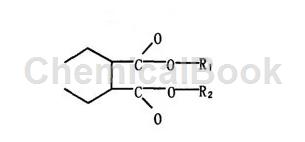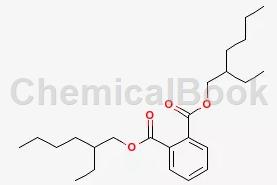1. What are phthalates?
PhthalicAcid Esters (PAEs for short, also known as phthalate esters) are a large class of fat-soluble compounds that are commonly used as plasticizers for plastic materials and are recognized as the fourth category of toxic chemicals. An environmental endocrine disruptor is also known as an endocrine disruptor. Its basic structure is:

Di(2-ethylhexyl) phthalate, dioctyl phthalate, and bis(2-ethylhexyl) phthalate (DEHP) are the most widely used and highly toxic chemicals in our daily life. A plasticizer additive. The specific structural formula is:

2. How does DEHP enter the human body?
1. Contamination of food by DEHP in food packaging
Some polymer and anti-polymer components in food packaging materials can cause food to be contaminated by DEHP, such as brush inks used in flexible packaging. Glue, aluminum flakes and sealing rings used in packaging paper and plastic products. The largest source of human exposure comes from food. The average daily intake of phthalates from food per person is estimated to be 0.1 to 1.6 mg.
2. DEHP present in medical devices
Commonly used PVC products such as intravenous blood bags, intravenous tubes, and urinary drainage bags contain DEHP. Plasticizers used in medical devices. It has the opportunity to directly enter human body fluids, organs and tissues, which may have serious consequences for patients. Japan has measured the acute toxicity of phthalates in human blood and fat tissue. However, it can have teratogenic and mutagenic effects on animals at sustained large doses.
3. Sources of DEHP in the air
DEHP is the main component of phthalates that pollutes the atmosphere. The volatilization loss of plasticizers in plastic products, spray coating, incineration of plastic waste, heating and volatilization of plasticizers during the production process of plastic products factories and plasticizer production plants cause DEHP to enter the air, causing excessive DEHP content in the air. reason.
4. Sources of DEHP in water bodies
Humic acid in water is the decay product of animals, plants, microorganisms and their waste materials. It is a polymer composed of proteins, fats, carbohydrates, pigments, etc. It has a large association constant with DEHP, which is why DEHP is used in The main cause of existence in water environment.
3. DEHP absorption, distribution and metabolism
1.Absorption of EHP
DEHP can be absorbed through the gastrointestinal tract, lungs and skin, and the gastrointestinal tract is usually the main absorption route.
2. Distribution in the organization
After oral administration of DEHP and digestion and absorption, DEHP and its metabolites are mainly distributed in the blood, liver, kidneys, gastrointestinal tract and adipose tissue.
3.Metabolism of DEHP
DEHP is mainly metabolized in the liver and excreted by the kidneys.
4. Toxic effects of plasticizers (taking DEHP as an example)
1. To the liver. kidney. Heart Effect
DEHP has no effect on liver cell membrane lipids at low concentrations; but at medium and high concentrations, DEHP can cause lipid peroxidation of liver cell membrane lipids, causing damage to liver cells.
DEHP can cause lipid peroxidation of kidney cell membrane lipids at low and medium concentrations. As the concentration increases, membrane lipid peroxidation intensifies, kidney cell damage aggravates, and kidney damage is caused.
2. Impact on nervous system development
Research on the effect of DEHP on gene expression in human breast cancer cells shows that DEHP can down-regulate the expression of FGDI and PAFAHlBl genes related to fetal brain development. It is speculated that DEHP has an important impact on the expression of human genes, and at appropriate concentrations it may affect The development of the fetal nervous system results in birth defects.
3. Reproductive and developmental toxicity of DEHP
DEHP causes obvious testicular damage when administered orally to rodents, which is characterized by severe atrophy of the seminiferous tubules, most spermatocytes and sperm cells falling off from the seminiferous epithelium, and only a small number of spermatogonia and Sertoli cells attached. On the basement membrane of seminiferous tubules, it is suggested that this compound can interfere with the interconnection between spermatogenic cells and testicular Sertoli cells

 微信扫一扫打赏
微信扫一扫打赏

